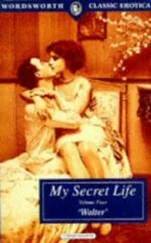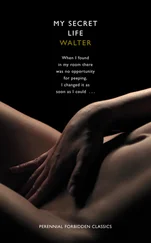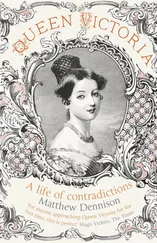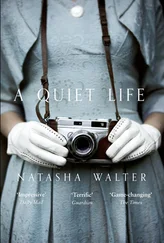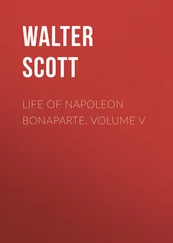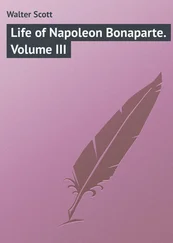His belief took a knock when the case collapsed in March 1871 and the claimant was arrested and charged with ‘wilful and corrupt perjury’. But the blow was not conclusive. The born believers held firm. While on bail awaiting trial (the new case was delayed for over a year) the claimant made a triumphal progress across England. In May 1872 he was given a hero’s welcome and a town parade at Southampton, not far from Alresford. When the second trial finally took place – it ran from February 1873 to February 1874 – the claimant was found guilty and sentenced to fourteen years’ penal servitude. Even so, Sickert refused to relinquish his beliefs completely. ‘Are we even now quite sure,’ he wrote almost sixty years after the event, ‘of the rights in the matter of Roger Charles Doughty Tichborne?’ 52 The case never lost its appeal for him. The story of a relative disappearing into Australia, perhaps one day to return, exciting enough in itself, had an additional resonance for the grandson of Eleanor Henry.
Walter also sought out drama in more conventional settings. He became stage-struck, or Bard-struck. At school they would read Shakespeare with Mr Hunt in the gardens of Pembridge Square. Walter soon purchased his own Globe edition of the works. He was taken by his parents to see Samuel Phelps, the great Shakespearean actor of the day, playing Shylock, Falstaff, Wolsey, Macbeth (and Sir Peter Teazle), and – enraptured by his performances – soon learnt to imitate his manner. 53
But always alongside these other enthusiasms ran his constant interest in art. Throughout his schooldays, his sister recalled, ‘his most abiding pleasure was drawing & painting’. The ‘very little pocket money’ he received from his father was put towards buying art materials. 54 He also looked at pictures. He pored over the popular illustrated weeklies, drinking in the dramatic reportage of the Illustrated London News , the humorous diversions of Punch , and the educational diet of the Penny Magazine.55 He began to be taken to public galleries, and he was excited by what he saw. ‘It is natural to all ages,’ he later remarked, ‘to like the narrative picture, and I fancy, if we spoke the truth, and our memories are clear enough, that we liked at first the narrative picture in the proportion that it can be said to be lurid.’ The young Walter’s ‘uninfluenced interest’ was first captured at the South Kensington Museum by John ‘Mad’ Martin’s swirling, almost cinematic vision of Belshazzar’s Feast and by George Cruikshank’s melodramatic series of prints, The Bottle , depicting the awful and inevitable effects of drink upon a Victorian family. 56 From the early 1870s onwards, Walter also went with his father to the regular winter loanexhibitions held in the Royal Academy’s gallery at Burlington House. 57 There he was introduced to the works of the old masters. He ‘loved’ them from the first, perhaps not least because they, too, were often ‘narrative pictures’ and sometimes ‘lurid’. 58
Almost unconsciously Walter absorbed many of the practical and professional concerns of picture making. At home and elsewhere they were constant elements in the life around him. He spent time too in the studios of his father’s friends. He even posed for a history painting, appearing as a young – and rather gawky – Nelson, in George William Joy’s picture, Thirty Years Before Trafalgar . 59
In 1873 Mrs Sickert gave birth to her sixth and last child, another boy. He was christened Leonard but was known in the family as Leo. 60 Walter, however, was far removed from the world of the nursery. He was growing up. In the summer of 1874 the family went to the North Devon village of Mortehoe, renting a cottage from the local publican, Mr Conibear. It was a halcyon summer for Walter. The place was a ‘real favourite’. Several family friends joined them there. Walter helped on the farm, learning to cut and bind wheat, and how to drive a wagon through a gate. He made friends with the Conibear children. One day he discovered an octopus washed up on the seashore and, putting it on to a slate, took it up the hill to show to Professor T. H. Huxley, who was also staying in the village for the summer. The eminent scientist took at once to the inquisitive 14-year-old, and they became friends. 61
An interest in cephalopods was not Walter’s only claim to precocity. He would rise early to help the milkmaids with their work – or, rather, to distract them. Years later, when writing to Nina Hamnett, he told her, ‘If you go to Barnstaple have look at Mortehoe, which I think adorable, probably because I used to make love to the milkmaids there when I was 14.’ 62 Although his love-making may have been no more than flirtation, it is possible that it went further. * The suggestion is easy enough to credit. Walter’s excitement at the holiday is palpable. As early as the following March he was writing to Mr Conibear informing him that his parents would definitely be taking the house again the following summer, and enclosing two sketches – one of Mortehoe parish church, the other of a rocking horse recently given to Oswald Valentine. 63
The North Devon headland had charms not only for Walter. His father was inspired by the rugged coastal landscape. One of his paintings, worked up from sketches made that summer, was exhibited at the Royal Academy the following year. It was Oswald Sickert’s first exposure at Burlington House, and built upon his showings at the New Water Colour Society, the Dudley Gallery, and Boydell’s ‘Shakespeare Gallery’ in Pall Mall. 64 The achievement gave Walter a first, vicarious, savour of the Academy’s extraordinary power as the arbiter of contemporary taste and artistic prestige. It was a pungent taste and one that both attracted and repelled him.
* ‘Sky blue’ was a slang term for bread-and-milk.
* An echo of his happy time with the milkmaids at Mortehoe perhaps lingers in his 1910 rhapsody upon the glorious physical presence of Juno, in Raphael’s The Council of the Gods at the Villa Farnesiana, Rome, with her ‘fleshy lustrous face, like one of Rowlandson’s wenches’; her hands, he remarks approvingly, ‘are gross, material hands, the hands, let us say, of a milkmaid’ (‘Idealism’, New Age , 12 May 1910). Sickert’s friend at Mortehoe, the farmer’s son, David Smith, certainly did get into trouble for getting one of the local farm girls pregnant (information from Mr Conibear’s great-grandson, George Gammon).
I think I could recommend you a boy.
(G. F. Maclear to Reginald Poole)
Within the family, Walter’s spirit and his domination of his younger brothers were beginning to cause some anxiety. It was decided that he needed a more challenging environment than could be provided by the little school in Pembridge Villas and that he needed to be separated from his brothers, or, rather, they needed to be separated from him. (Helena, whose health was causing some concern, had already been sent away to school at Miss Slee’s now somewhat reduced establishment in Dieppe. 1 ) After the matter had been inquired into with obvious thoroughness, the boys were divided up between three of London’s leading public schools. Robert went to UCS, and Bernhard to the City of London School (where it was hoped that the formidable Headmaster, Dr Abbot, would ‘cure him of laziness’). Walter was enrolled at King’s College School. He arrived – aged fifteen – for the autumn term of 1875. 2
The school was then housed in the basement of the east enfilade of Somerset House, next to King’s College itself. It was essentially a day school, though a few of the 550 pupils ‘boarded’ at the houses of the married masters. The main entrance was on the Strand, where, opposite the gates of St Mary-le-Strand, a broad flight of steps ran down to an inaptly named concrete ‘playground’ in which no games were ever played. Although the school dining room looked out over the river, and at least some of the classrooms were large high-ceilinged spaces level with the street, the principal flavour was one of subterranean gloom and confinement. The place was sometimes referred to, with as much truth as humour, as ‘the dungeon on the Strand’ 3 . The first – and defining – feature of the school was a long, narrow, and dimly lit vaulted corridor off which most of the classrooms led. Dark, even during summer, it was lit by a line of gas lamps that lent their own particular aroma to the inevitable institutional scents of floor polish, cabbage, and unwashed boy. From 11.15 to 11.30 a.m. and from 1 to 1.30 p.m., and at the end of the day’s work, the corridor was generally ‘a pandemonium of yelling, shouting and singing’. Some of the bigger and ‘lustier fellows’ of the Lower School would sometimes amuse themselves by linking arms and rushing down the passage, ‘to the extreme discomfort of those who failed to get out of their way in time’. 4 For Walter, however, the site was fraught with positive familial associations. It was in the basements of Somerset House that Richard Sheepshanks had carried out his comparative measurements to establish the new official yard.
Читать дальше




